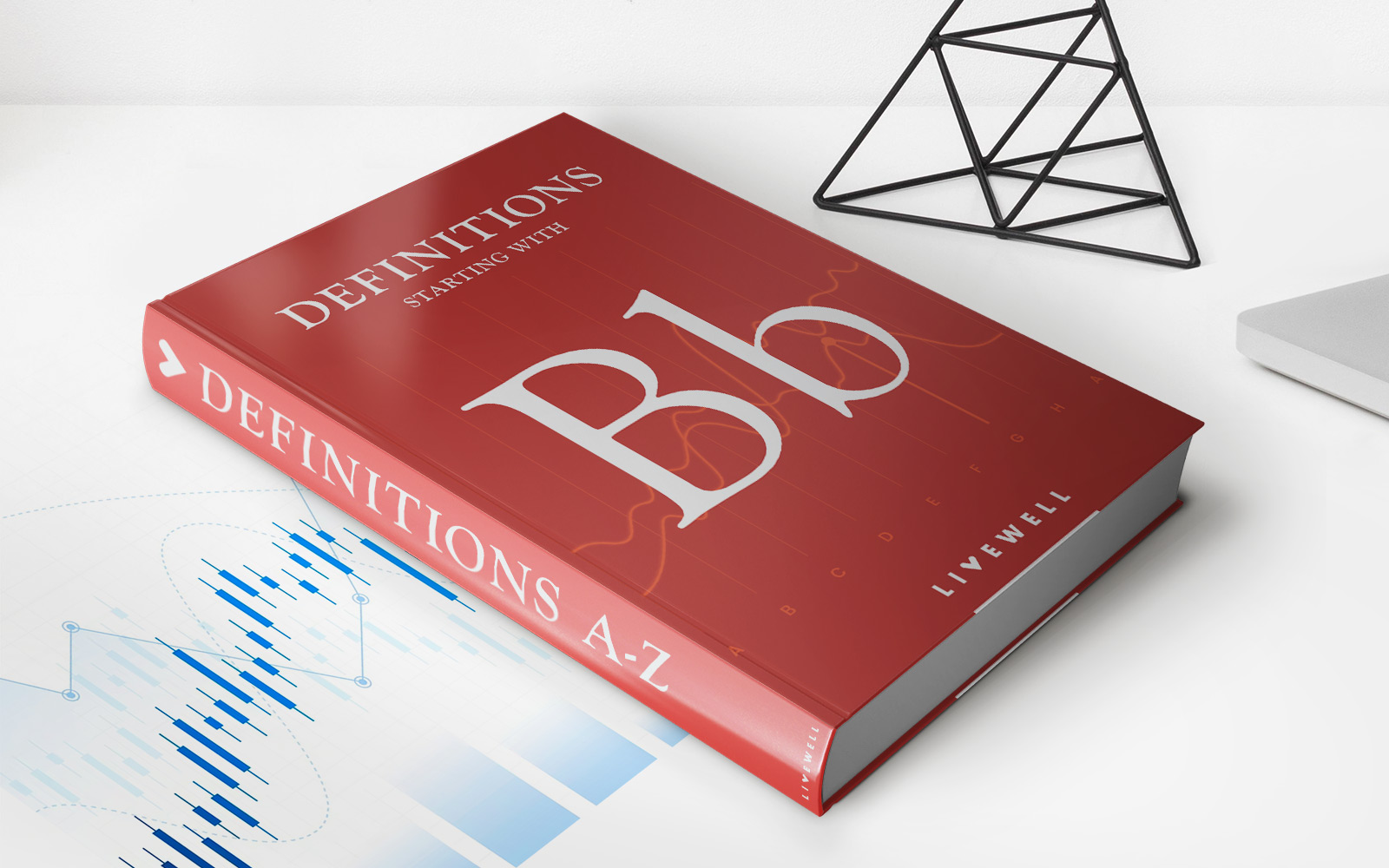Home>Finance>What Is The Difference Between An Income Tax And A Payroll Tax


Finance
What Is The Difference Between An Income Tax And A Payroll Tax
Published: November 2, 2023
Learn the distinction between income taxes and payroll taxes in the realm of finance and understand their impact on personal and business finances.
(Many of the links in this article redirect to a specific reviewed product. Your purchase of these products through affiliate links helps to generate commission for LiveWell, at no extra cost. Learn more)
Table of Contents
Introduction
When it comes to taxes, it’s easy to feel overwhelmed by the various types and terminology. Among the most common types of taxes are income tax and payroll tax. While they both contribute to government revenue, they differ in terms of their definitions, purposes, calculation methods, and the entities they impact. Understanding the distinction between these two taxes is essential for individuals and businesses alike, as it can have a significant impact on financial planning and compliance.
Income tax and payroll tax are integral components of a country’s tax system, but they serve different purposes and are collected in different ways. By delving into each type and examining their nuances, we can gain a clearer understanding of how these taxes function and the impact they have on taxpayers.
In this article, we will explore the differences between income tax and payroll tax. We will discuss their definitions, purposes, calculation methods, and the entities they affect. By the end, you will have a comprehensive understanding of these two taxes and how they shape the financial landscape.
Definition of Income Tax
Income tax is a tax imposed by the government on the income earned by individuals, corporations, and other legal entities. It is a direct tax levied on the total taxable income of an individual or the net profit of a business. The purpose of income tax is to provide a source of revenue for the government to fund public services and programs.
The taxable income for individuals is calculated by subtracting allowable deductions and exemptions from their total income in a given tax year. These deductions may include expenses related to education, housing, medical care, and retirement contributions. The remaining amount, known as the taxable income, is then subjected to a progressive tax rate system, where higher income brackets are taxed at higher rates.
For corporations and legal entities, the taxable income is determined by subtracting allowable business expenses and deductions from the total revenue or gross income. The resulting net profit is then subject to the applicable corporate tax rate.
It is important to note that income tax is not a one-size-fits-all tax. The rates and thresholds vary significantly from country to country, and often within different regions of a country. Additionally, there may be different categories of income that are subject to different tax rates, such as earned income, capital gains, and passive income.
The collection of income tax is typically managed by the country’s tax authority, such as the Internal Revenue Service (IRS) in the United States or Her Majesty’s Revenue and Customs (HMRC) in the United Kingdom. Individuals and businesses have an obligation to file tax returns annually, reporting their income, deductions, and any owed taxes. Failure to comply with income tax regulations can result in penalties and legal consequences.
Overall, income tax is a significant component of a country’s tax system, ensuring a fair distribution of the tax burden based on an individual’s or business’s ability to pay.
Definition of Payroll Tax
Payroll tax, also known as employment tax or withholding tax, is a tax that is deducted from the wages and salaries paid to employees. It is a form of tax levied by the government on both the employer and employee, with the purpose of funding social welfare programs, such as Social Security, Medicare, and unemployment benefits.
The payroll tax is calculated based on a percentage of the employee’s wages or salary. The employer is responsible for withholding the necessary amount from the employee’s paycheck and remitting it to the government on behalf of the employee.
In addition to funding social welfare programs, payroll taxes may also contribute to other government initiatives, such as disability insurance, workers’ compensation, and healthcare programs. The specific programs funded by payroll taxes vary from country to country.
The calculation of payroll tax is often straightforward, with a fixed percentage applied to the employee’s income up to a certain threshold. However, the actual rates and thresholds can differ among jurisdictions. In some cases, there may be different rates for employers and employees, with each party responsible for paying their portion of the tax.
Unlike income tax, which considers various sources of income and deductions, payroll tax is typically based solely on the employee’s wages or salary. This means that other sources of income, such as investment earnings or rental income, are not subject to payroll tax.
It is the employer’s responsibility to accurately calculate and withhold the correct amount of payroll tax from each employee’s paycheck and to remit it to the appropriate government agency. This process often involves keeping detailed records of employee earnings, deductions, and taxable allowances.
Overall, payroll tax plays a vital role in funding social welfare programs and supporting the financial well-being of employees. It is an important aspect of the tax system that ensures the government has the necessary funds to provide social benefits to the workforce.
Purpose of Income Tax
The primary purpose of income tax is to generate revenue for the government to fund essential public services and programs. It is a key component of a country’s fiscal system and plays a crucial role in financing the infrastructure, healthcare, education, defense, and other public goods and services that benefit society as a whole.
Income tax serves as a progressive tax system, where individuals and businesses with higher levels of income contribute a greater proportion of their earnings to the government compared to those with lower incomes. This progressive structure aims to achieve a fairer distribution of the tax burden and help alleviate income inequality.
Furthermore, income tax can be used as a tool for economic policy. Governments may use income tax rates and exemptions to incentivize behavior that they deem beneficial to the economy. For example, they may offer tax deductions for certain expenses, such as education or business investments, to encourage individuals and businesses to engage in activities that contribute to economic growth and development.
Income tax also acts as a means of tax compliance and equity. By requiring individuals and businesses to report their income and pay the appropriate taxes, income tax helps ensure that everyone is contributing their fair share to public funds. It helps prevent tax evasion and promotes transparency in financial transactions.
Moreover, income tax revenues can be used to fund social welfare programs, such as healthcare, education, unemployment benefits, and retirement benefits. These programs support the social and economic well-being of citizens, helping to reduce poverty and provide a safety net for those in need.
Overall, the purpose of income tax extends beyond simply generating revenue. It aims to create a fair and equitable tax system, incentivize economic behavior, promote tax compliance, and fund essential public services and social welfare programs that contribute to the overall well-being of society.
Purpose of Payroll Tax
The purpose of payroll tax is to fund social welfare programs and provide financial security to employees. It plays a crucial role in supporting programs such as Social Security, Medicare, and unemployment benefits.
One of the primary objectives of payroll tax is to fund Social Security, a program that provides retirement benefits to eligible individuals. By requiring both employers and employees to contribute a portion of their wages to Social Security, payroll tax ensures that retirees have a source of income during their retirement years. This helps to alleviate financial strain and provides a measure of financial security for older individuals.
Another key purpose of payroll tax is to finance healthcare programs, such as Medicare. The funds collected through payroll taxes are used to support the healthcare needs of older adults and individuals with disabilities. Medicare provides vital healthcare coverage, including hospital care, medical treatments, and prescription medications, to eligible individuals.
Payroll tax also contributes to unemployment benefits programs. It helps provide temporary financial assistance to individuals who become unemployed through no fault of their own. By requiring employers to contribute to these programs, payroll tax helps create a safety net for individuals who are in between jobs and facing financial hardships.
In addition to these specific social welfare programs, payroll tax funds may also be used to support other government initiatives aimed at improving the overall well-being of employees. This can include programs related to workers’ compensation, disability insurance, and healthcare subsidies.
By designating a portion of an employee’s wages for payroll tax, the government ensures a steady source of revenue to finance these social welfare programs. This helps provide financial protection, healthcare coverage, and support to individuals and their families during various stages of life.
Overall, the purpose of payroll tax is to create a system of shared responsibility between employers and employees, ensuring that both parties contribute towards the well-being and financial security of individuals throughout their working years and beyond.
Calculation of Income Tax
The calculation of income tax can be a complex process that takes into account various factors such as taxable income, deductions, exemptions, and applicable tax rates. The specific method of calculation may vary based on the tax laws and regulations of each country. Here is a general overview of how income tax is calculated:
- Determine gross income: The first step in calculating income tax is to determine the gross income. This includes all income earned from various sources such as employment, investments, rental properties, and self-employment.
- Apply allowable deductions: Next, allowable deductions are subtracted from the gross income to arrive at the taxable income. These deductions can include expenses related to education, healthcare, mortgage interest, charitable contributions, and retirement contributions.
- Consider exemptions: Some countries offer tax exemptions for certain individuals, such as dependents or seniors. These exemptions further reduce the taxable income.
- Calculate taxable income: The subtracted deductions and exemptions result in the taxable income, which is the amount that is subjected to income tax.
- Apply tax rates: Tax rates are then applied to the taxable income. In most countries, income tax rates are progressive, meaning that higher income brackets are subjected to higher tax rates. Different income ranges may have different tax rates.
- Calculate tax liability: Multiplying the taxable income by the applicable tax rates determines the tax liability. However, this is the gross tax amount before any tax credits or payments are considered.
- Consider tax credits and payments: Tax credits, such as child tax credits or education credits, can be applied to reduce the final tax liability. Additionally, any tax payments made throughout the year, such as through employer withholdings or estimated tax payments, are subtracted from the tax liability.
- Finalize tax due or refund: The final step is to determine if the taxpayer owes additional tax or is entitled to a refund. If the payments and credits exceed the tax liability, a refund is issued. If the tax liability exceeds the payments and credits, the taxpayer will need to pay the remaining tax due.
It’s important to note that tax laws and regulations can change, and specific rules may vary by jurisdiction. Therefore, individuals and businesses are advised to consult with tax professionals or use approved tax software to ensure accurate and compliant income tax calculations.
Calculation of Payroll Tax
The calculation of payroll tax involves determining the amount to be withheld from employees’ wages and the portion to be paid by the employer. The specific method of calculation may vary depending on the country’s tax laws and regulations, but the process generally involves the following steps:
- Identify the applicable tax rates: The first step in calculating payroll tax is to determine the applicable tax rates. This typically includes taxes for social security, Medicare, and any other applicable programs.
- Determine the employee’s taxable wages: The taxable wages are the portion of an employee’s earnings that are subject to payroll tax. This may include regular salary or hourly wages, bonuses, commissions, and other forms of compensation.
- Apply the employee’s portion of the tax: The employee’s portion of the payroll tax is calculated based on the taxable wages and the applicable tax rates. This amount is withheld from the employee’s paycheck and remitted to the government.
- Calculate the employer’s portion of the tax: The employer is also responsible for paying a portion of the payroll tax. The exact amount varies, but it is often a percentage of the employee’s taxable wages.
- Add any additional employer taxes: In some cases, there may be additional employer taxes to consider, such as state or local payroll taxes. These taxes are calculated based on applicable rates and the employee’s taxable wages.
- Sum up the total payroll tax: The total payroll tax is the combination of the employee’s tax withheld and the employer’s tax liability, including any additional employer taxes. This represents the amount that needs to be remitted to the appropriate government agencies.
It’s important to note that the calculation of payroll tax can be influenced by factors such as tax brackets, exemptions, and thresholds. Additionally, different countries may have varying requirements and rates for payroll tax. Employers should ensure they are aware of and comply with the specific regulations in their jurisdiction.
To accurately calculate payroll tax, employers often use payroll software or engage the services of a payroll provider. These tools help automate the calculation process, ensure compliance with tax laws, and generate accurate pay stubs and tax reports for both employees and tax authorities.
Differences in Collection
Income tax and payroll tax differ in the way they are collected from individuals and businesses. These differences can be seen in the collection process, timing, and responsibility for remittance. Let’s explore the variations in the collection of income tax and payroll tax:
Income Tax Collection:
- Self-Reporting: Individual taxpayers are typically responsible for calculating and reporting their own income tax liability to the tax authority.
- Tax Returns: Taxpayers are required to file annual tax returns, disclosing their income, deductions, and any tax credits or payments made throughout the year.
- Payment Schedule: Income taxes are usually paid on a periodic basis, such as quarterly or annually, depending on the jurisdiction.
- Individual Responsibility: Individuals are responsible for ensuring the accurate calculation of their tax liability and remitting the necessary payments to the government.
Payroll Tax Collection:
- Employer Responsibility: Employers play a key role in collecting and remitting payroll tax on behalf of their employees.
- Withholding from Wages: Employers are required to deduct the appropriate amount of payroll tax from employees’ wages before issuing paychecks.
- Timely Remittance: Employers are responsible for remitting the withheld payroll tax to the tax authority within specified timeframes, often on a regular basis (e.g., monthly or quarterly).
- Reporting and Documentation: Employers must maintain accurate records of employees’ wages, hours worked, and the amount of payroll tax withheld and remitted.
These differences in collection highlight the distinct roles and responsibilities of individuals and employers in the tax payment process. While individuals are primarily responsible for reporting and paying their own income tax, employers take on the duty of withholding and remitting payroll tax on behalf of their employees.
It’s important for individuals to understand their obligations when it comes to income tax and for employers to accurately calculate and remit the appropriate amount of payroll tax. Non-compliance with tax regulations can lead to penalties or legal consequences, underscoring the significance of adhering to the respective collection requirements.
Differences in Rates
One of the significant differences between income tax and payroll tax lies in the rates at which they are levied. These differences in rates impact the overall tax liability for individuals and businesses. Let’s explore the variations in rates between income tax and payroll tax:
Income Tax Rates:
- Progressive Structure: Income tax rates typically follow a progressive structure, meaning that as income increases, the tax rate also increases. Higher income brackets are subject to higher tax rates, while lower income brackets may have lower tax rates or may even be exempt from certain taxes.
- Tax Brackets: Income tax rates are often divided into different tax brackets. Each bracket represents a range of income and has a specific tax rate applied to it. The higher an individual’s income falls into a particular bracket, the higher the tax rate applied to that portion of income.
- Tax Deductions and Credits: Taxpayers may be able to reduce their overall tax liability by claiming eligible deductions and tax credits. These deductions and credits can lower the taxable income and consequently reduce the amount of tax owed.
- Varied Rates and Schedules: Income tax rates can vary significantly between countries and even within different regions of a country. Additionally, the frequency and timing of tax payments may vary, such as quarterly or annual payments.
Payroll Tax Rates:
- Fixed Percentage: Payroll tax rates are often fixed percentages applied to the employee’s wages. The rate may differ depending on the type of tax being levied, such as social security or Medicare.
- Shared Responsibility: Both employers and employees contribute to payroll tax, with each party responsible for a portion of the tax burden. The employer typically withholds the employee’s portion from their wages and remits it to the government, in addition to paying their own share.
- Wage Limits and Caps: Payroll taxes may have wage limits or caps, above which only a portion of the wages is subject to the tax. This means that once a certain income threshold is reached, the tax rate may no longer increase for higher income levels.
- Additional Employer Taxes: In some cases, there may be additional employer taxes beyond payroll taxes, such as state or local taxes. These additional taxes may have their own specific rates and rules.
The differences in rates between income tax and payroll tax highlight the varying approaches to taxation. Income tax rates typically follow a progressive structure, intending to distribute the tax burden fairly based on an individual’s income level. On the other hand, payroll tax rates are often fixed percentages applied to wages, with both employers and employees sharing the responsibility.
It’s important for individuals and employers to stay informed about the specific tax rates applicable to their jurisdiction and ensure compliance with the tax laws and regulations to avoid penalties and maintain financial stability.
Differences in Calculation Methods
The calculation methods for income tax and payroll tax differ in several ways, reflecting the distinct nature of these taxes and the factors taken into consideration when determining tax liability. Let’s examine the variations in calculation methods between income tax and payroll tax:
Income Tax Calculation:
- Comprehensive Assessment: Income tax calculations often involve a comprehensive assessment of an individual’s total income from various sources, such as employment, investments, rental properties, and self-employment.
- Deductions and Exemptions: Individuals may be eligible to claim deductions and exemptions to reduce their taxable income. These can include expenses related to education, healthcare, mortgage interest, charitable contributions, and retirement contributions.
- Tax Tables or Software: To calculate income tax, individuals may refer to tax tables provided by tax authorities or utilize tax software that takes into account the appropriate tax rates and deductions based on their specific circumstances.
- Progressive Tax Rates: Income tax rates often increase progressively as income levels rise. This means that individuals in higher income brackets are subject to higher tax rates compared to those with lower incomes.
Payroll Tax Calculation:
- Wage-based Calculation: Payroll tax calculations are typically based on wages or salaries earned by employees. The tax is calculated as a percentage of the employee’s income.
- Fixed Percentage: Payroll tax rates are often fixed percentages applied to the employee’s wages, with specific rates for different types of payroll taxes, such as social security or Medicare.
- Withholding System: Employers are responsible for withholding the necessary amount of payroll tax from employees’ wages and remitting it to the government on their behalf.
- Employer Contributions: Employers also contribute to payroll tax by paying a portion of the tax based on the employee’s wages.
These differences in calculation methods highlight the unique aspects of income tax and payroll tax. Income tax calculations involve a comprehensive assessment of all sources of income, deductions, and exemptions, resulting in a progressive tax structure based on an individual’s total taxable income. On the other hand, payroll tax calculations are straightforward and based on a fixed percentage of an employee’s wages, with employers responsible for withholding and remitting the tax.
It’s crucial for individuals to understand the specific calculation methods for income tax in their jurisdiction and accurately report their income and claim eligible deductions. Similarly, employers must correctly calculate and withhold the appropriate payroll tax amounts to ensure compliance with tax regulations and avoid penalties.
Impact on Different Entities
The impact of income tax and payroll tax differs for various entities, including individuals, businesses, and the overall economy. Let’s explore how these taxes impact different entities:
Individuals:
- Income Tax: Income tax affects individuals by reducing their disposable income. Higher income tax rates may result in a larger tax liability, reducing the amount of money available for personal expenses, savings, or investments. However, individuals may benefit from certain deductions, exemptions, and tax credits that help reduce their overall tax burden.
- Payroll Tax: Payroll tax impacts individuals by reducing their take-home pay. The employee’s portion of payroll tax is deducted from their wages before they receive their paycheck. This reduces the amount of money available for immediate use. However, individuals may indirectly benefit from payroll tax contributions that fund social welfare programs such as Social Security or Medicare, providing financial security and healthcare coverage during retirement or in times of need.
Businesses:
- Income Tax: Income tax affects businesses by reducing their profitability. The tax liability is calculated based on the net profit of the business, which can directly impact its bottom line. Businesses may also be eligible for certain deductions and credits that help lower their overall tax burden.
- Payroll Tax: Payroll tax impacts businesses by increasing their labor costs. Employers are responsible for withholding and remitting the employee’s portion of payroll tax in addition to paying their own share. This, along with other labor-related costs, can affect the overall expenses and profitability of the business.
Economy:
- Income Tax: Income tax plays a vital role in generating government revenue to fund public services and programs. It helps finance infrastructure development, healthcare initiatives, education, defense, and other essential services that contribute to economic growth and societal well-being. Tax incentives, such as deductions for business expenses or investment credits, can also stimulate economic activity.
- Payroll Tax: Payroll tax has broader economic implications. The funds collected through payroll tax contribute to social welfare programs that provide crucial support to individuals, such as retirement benefits, healthcare, and unemployment benefits. These programs help stabilize the economy by providing financial security, healthcare coverage, and a safety net for employees during periods of unemployment or retirement.
As the impact of income tax and payroll tax varies across entities, it is essential for individuals to understand their tax obligations and plan their finances accordingly. Similarly, businesses need to consider the effect of taxes when making financial decisions and budgeting for labor costs. Collectively, income tax and payroll tax play crucial roles in financing essential government services and social welfare programs, ultimately contributing to economic stability and societal well-being.
Conclusion
Income tax and payroll tax are two distinct types of taxes that play significant roles in a country’s tax system. While both contribute to government revenue, they differ in their definitions, purposes, calculation methods, collection processes, rates, and impacts on individuals, businesses, and the economy.
Income tax is imposed on the income earned by individuals and businesses and is calculated based on taxable income, deductions, exemptions, and progressive tax rates. It serves to generate government revenue, incentivize certain economic behavior, and fund public services and social welfare programs.
On the other hand, payroll tax is levied on employees’ wages and is collected by employers, who withhold the necessary amounts from employees’ paychecks and remit them to the government. Payroll tax funds social welfare programs such as Social Security, Medicare, and unemployment benefits, providing financial security and healthcare coverage to employees during various life stages.
The differences in rates, calculation methods, and impacts on individuals and businesses highlight the unique characteristics of income tax and payroll tax. Understanding these differences is crucial for individuals and businesses to fulfill their tax obligations, plan their finances effectively, and remain compliant with tax laws and regulations.
Overall, income tax and payroll tax are integral components of a country’s tax system, serving different purposes and contributing to the overall well-being of individuals and the economy. By adhering to the specific requirements of each tax and seeking professional advice, individuals and businesses can navigate the complexities of taxation and make informed financial decisions.














